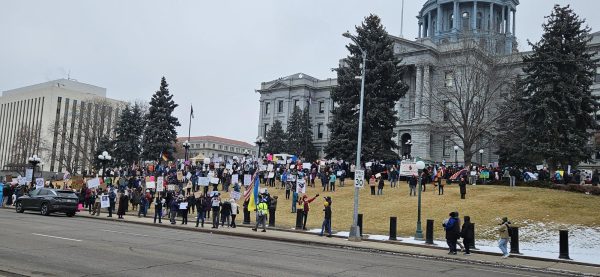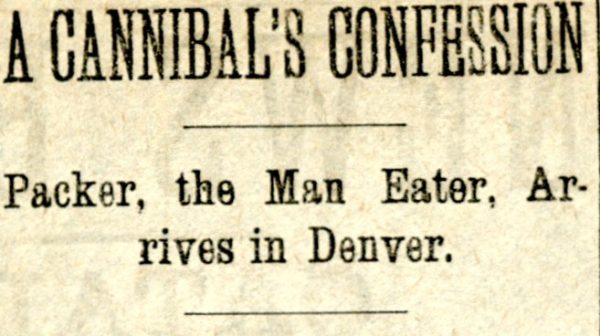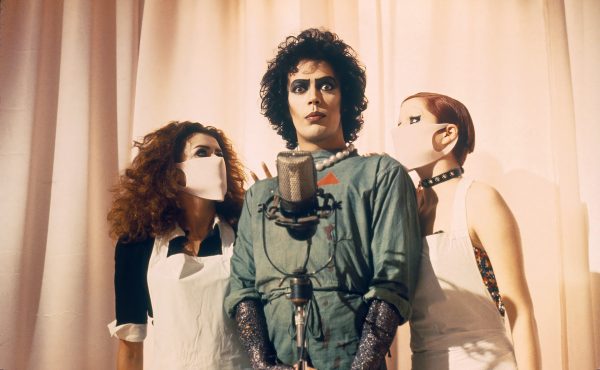LGBTQ+ History Month

LGBTQ+ March for equal rights
As Arapahoe Community College (ACC) celebrates LGBTQ+ History Month this month in October, the Pinnacle is reflecting on the advances our society has now and their importance. Decades ago, people of the LGBTQ+ community were not represented at all. Now in a day and age where it is still a fight for basic rights, it is clear that changes have been made.
It all started when a Missouri High School teacher by the name of Rodney Wilson helped designate the entire month of October to the celebration and learning of LGBTQ+ History in 1994. With the backing of GLAAD, the Human Rights Campaign, and many other organizations, not only was the month of October designated to the community but Coming Out Day (October 11) had become a national holiday. Over the years, the fight for basic rights within this community has been rigorous and deadly. From homosexuality being condemned as an illness and banned in jobs, to police raiding the Stonewall Inn in June of 1969, the ongoing fight for equality has never slowed down. 26 years later, the entire world has changed. Protests, marches, and rights movements have affected the way the world views and respects the LGBTQ+ community.
The advances of laws, representation, and validation for the LGBTQ+ community in the United States have significantly increased with recent times. Although the current events for these rights have been rocky and not the best quality, there have been major advances throughout the world. December 10, 1924, marks the first documented gay rights organization called The Society of Human Rights. Started by Henry Gerber in Chicago, it published the first American homosexual publication named Friendship and Freedom. After this push for representation, the struggles LGBTQ+ members were already facing worsened.
In December of 1950, the “Lavender Scare” caused thousands of homosexual men and women were discharged from the military and fired from government jobs. April, 1952, named homosexuality a sociopathic personality disturbance. Immediately following this setback, on April 27, 1953, President Dwight Eisenhower signed an executive order banning homosexuals from working for the Federal government and named them “security risks, alcoholics, and neurotics.” The Stonewall Riot is a very well-known event in LGBTQ+ history – a 3-day long riot starting June 28, 1969, was caused by the Stonewall Inn at Greenwich Village being raided by police. The event only had minimal news coverage but has been the spark behind many other protests and movements.
The list of protests and activist events goes on and on, yet rights weren’t put in place until December 15, 1973, when the American Psychiatric Association voted homosexuality from the list of mental illnesses. July 8, 1980, marks the day the Democratic Rules Committee states in will not discriminate against homosexuals. Vermont is the first state to legalize civil unions and registered partnerships between same-sex couples on April 26, 2000. It wasn’t until June 26, 2015, that same-sex marriage was declared legal in all 50 states by the Supreme Court.
The LGBTQ+ movement has been grueling and intense. To this day, it is still not over. As more time passes, more advances and struggles will continue to arise. From that first documented day of this fight to today, the world has become more accepting and more validating. This October is a time to recognize and educate on these events and the LBGTQ+ community. Depending on what Supreme Justice nominee is chosen into office, these advances could be challenged. With the race to replace Ruth Bader Ginsburg before the election, the process of actually getting to know and chose a new Supreme Justice is distorted. What the future will hold is unknown, but in the present, the fight will continue.

Zoë is a first year student at ACC who is pursuing a journalism career. She has been a Colorado native all her life, and she has won the Gold Key award in the Scholastic Art and Writing Contest for her photography. She wants to write...












